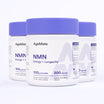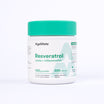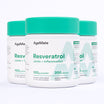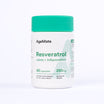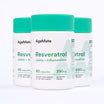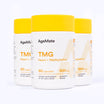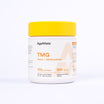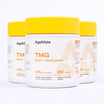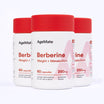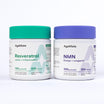Did you know that the tradition of sauna use dates back thousands of years, and that in Finland it's considered an essential part of life?
This age-old practice isn't just about relaxation; it's packed with a plethora of health benefits that modern science is just beginning to fully understand. The variety and methods of sauna use vary from dry saunas to steam rooms, but the health benefits remain consistently impressive.
Types of Saunas
Saunas can be classified mainly into three types: traditional dry saunas, which use heated rocks or a stove to warm the air; steam rooms, also known as Turkish baths, where steam provides heat and humidity; and infrared saunas, which use infrared lamps to directly warm the body.
Each type offers a unique experience and benefits, catering to different preferences and health considerations.
What Are the Health Benefits of Using a Sauna?
Regular sauna use is linked to numerous health benefits, thanks to the deep sweating and increased heart rate similar to moderate exercise.
These benefits include improved cardiovascular health, reduced risk of heart disease, and lower blood pressure. Additionally, the heat stress from sauna use can stimulate the immune system, helping to reduce the incidence of colds and other infections.
Cardiovascular Health: Regular sauna use has been linked to a reduction in the risk of cardiovascular diseases, including high blood pressure, cardiovascular disease, and improved endothelial function. It may also reduce arterial stiffness and lower systemic blood pressure through improved circulation and cardiovascular function (R).
Passive heat therapy, resembling sauna use, has shown improvements in endothelial function, arterial stiffness, and blood pressure, comparable to the benefits of exercise (R).
Respiratory Health: Sauna bathing may also reduce the risk of respiratory diseases, such as chronic obstructive pulmonary disease (COPD), asthma, or pneumonia, enhancing lung function and capacity (R).
Pain Relief and Chronic Conditions: Sauna use has been found beneficial for individuals with conditions like arthritis, chronic pain, and for post-myocardial infarction care. It may also aid in detoxification and support the immune system (R).
Skin Health: Regular sauna bathing can improve skin hydration, reduce transepidermal water loss, and enhance the stability of the epidermal barrier function. This indicates a protective effect of sauna on skin physiology, particularly on surface pH and hydration (R).
Mental Health and Well-Being: Sauna use has been associated with stress relief, improved relaxation, and can serve as a complementary therapy for conditions like depression and chronic fatigue syndrome (R).
Metabolic and Endocrine Effects: Sauna therapy may promote insulin sensitivity and boost the expression of endothelial nitric oxide synthase, offering potential benefits for vascular health and diabetes management (R).
When done regularly, the evidence suggests that sauna bathing can offer a wide range of health benefits, from cardiovascular improvements to enhanced mental well-being and skin health.

What Are the Health Benefits of a Dry Sauna?
Dry saunas, in particular, offer distinct health benefits. The low humidity and high temperature can help improve lung function, beneficial for those with respiratory issues like asthma or bronchitis.
The intense heat also aids in muscle relaxation and pain relief, making it an excellent option for post-workout recovery or for those with chronic pain conditions such as arthritis.
Based on recent studies, here are some key health benefits associated with regular dry sauna use:
Cardiovascular Health: Regular dry sauna bathing may improve cardiovascular function, including enhanced endothelial function, reduced arterial stiffness, and decreased systemic blood pressure. These benefits extend to various cardiovascular conditions, such as congestive heart failure and hypertension, contributing to an overall reduction in the risk of cardiovascular diseases (R).
Thermal and Autonomic Response: Dry sauna bathing induces comprehensive cardiovascular and autonomic changes, including increased core body temperature and improved hemodynamic parameters. These changes can benefit heart health and reduce stress (R).
Quality of Life and Obesity: Dry sauna therapy has been shown to improve the quality of life in obese individuals without adverse effects, although significant changes in body mass index, blood pressure, heart rate, or body composition may not be observed. This suggests that sauna therapy can be an effective non-pharmacological treatment to enhance well-being in obese patients (R).
Pain Management: Dry sauna therapy has been beneficial for patients with low back pain, improving quality of life and reducing pain. This therapy can be recommended as an alternative and complementary treatment for patients suffering from chronic pain (R).
Peripheral Arterial Disease: Waon therapy, a form of dry sauna therapy, has improved peripheral arterial disease by enhancing endothelial function and promoting vasodilation. This therapy is well tolerated and can be a viable option for improving cardiovascular health in patients with limited exercise tolerance (R)
These benefits are attributed to the physiological and therapeutic effects of the dry sauna, such as heat stress and improved circulation, which stimulate the body's natural healing processes.
It's important to note that while dry sauna bathing offers numerous health benefits, individuals with certain health conditions should use it with caution. Consulting with a healthcare professional before starting sauna therapy is advisable to ensure it's safe and appropriate for individual health needs.
Is the Sauna Safe for Me?
While saunas are safe for most people, certain health conditions require caution or avoidance. Those with cardiovascular issues, pregnant women, and individuals with conditions that affect the body's ability to regulate temperature should consult a healthcare provider before using a sauna.
It's also crucial to stay hydrated and limit sessions to a safe duration, typically between 15 to 20 minutes.
Getting the Most Out of Your Sauna Sessions
To maximise the health benefits of sauna use, consider incorporating a few best practices into your routine.
Stay hydrated by drinking plenty of water before and after your session, listen to your body to avoid overheating, and gradually increase your exposure to build tolerance.
Combining sauna sessions with cool showers or dips can enhance the circulatory benefits and improve overall vitality (R).
Conclusion
The health benefits of using a sauna are vast, ranging from improved cardiovascular health to enhanced relaxation and detoxification. Whether you prefer a dry sauna, steam room, or infrared sauna, incorporating this practice into your wellness routine can offer significant health and longevity advantages.
However, it's important to approach sauna use with mindfulness, especially if you have health conditions that could be affected by extreme heat. By understanding the types of saunas available and adhering to safety guidelines, you can enjoy the myriad health benefits that sauna use has to offer.



